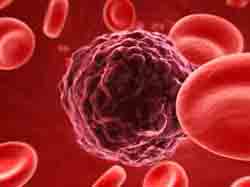Non communicable diseases
Sakshi Education
Non communicable diseases, also known as chronic diseases are not contagious. There are a number of reasons that causes such conditions. Some of them are -

The following list contains some of the major non-communicable diseases.
Cancer
Diabetes
Osteoporosis
Alzheimer's
Heart Disease

- Genetic abnormalities
- lifestyle or environment
- heredity
- hormonal disorders
- malnutrition
The following list contains some of the major non-communicable diseases.
Cancer
- Cancer can be defined as the uncontrolled growth of cells in our body. It could affect any part of the body from skin to mouth to colon.
- More 100 categories of cancers have been identified and they are broadly classified into four.
- The four categories include Carcinoma that affect the linings of internal organs, Leukaemia that affects the blood forming tissues, Lymphoma affecting the lymphatic system and Sarcoma that affect the muscles, bones and cartilages.
- Exact cause of the cancer has not been found yet. Situations that may lead to cancer includes heredity, genetics, chemical exposure, ionizing radiations, etc.
- Symptoms will be different depending on the type of cancers, acute pain is one common symptom noted in all cases.
- The treatment of cancer includes radiation, chemotherapy and surgery depending on the type of cancer and which stage it is at.
Diabetes
- Diabetes causes a condition where body cannot produce insulin (type 1) or limited production of insulin (type 2).
- There is also a category of gestational diabetes which is temporary condition that occurs during pregnancy.
- Causes are often cited as hereditary, genetic issues and insulin resistance that takes place within the body.
- Excessive thirst, obesity, or even severe weight loss could be symptoms of diabetes.
- As for cure, diabetes is not a disease but a condition, and it lasts for a life time. Diabetic patients are often advised to follow a healthy life style, take medicines that regulate the glucose content in body and continuously monitor the blood sugar levels.
Osteoporosis
- Osteoporosis is generally associated with old age, a condition which makes bones weak and fragile known as primary osteoporosis.
- There is another category called secondary osteoporosis which affects young and middle aged people.
- Osteoporosis can be caused by drop in estrogen after menopause, family history and body type, lifestyle factors and health conditions, lack of exercise, lack of calcium.
- Symptoms are usually lesser; however it increases the probability of fractures as the bones turn weaker. Chronic back pain is yet another symptom.
- Treatments available for osteoporosis are bisphosphonates, selective estrogen receptor modulators, denosumab, hormone-replacement therapies and parathyroid hormone analogues.
Alzheimer's
- Alzheimer’s causes deterioration of brain tissues which results in memory loss.
- Causes could be genetic disorders however there are sporadic Alzheimer’s cases that are not really linked to genes. It could be anything from head injuries to vascular diseases to inflammations.
- Symptoms include difficult in speech, disorientations, forgetfulness etc.
- There is no cure for this disease, and the patient has to be taken care of by a caretaker.
Heart Disease
- Heart disease aka coronary artery disease causes narrowing of arteries. A partially blocked artery can cause chest pain whereas a completely blocked one can cause heart attack.
- Several factors contribute to this heart condition. Some of them are LDL cholesterol being high, high blood pressure, obesity, heredity etc.
- Symptoms include Burning sensation in chest, pain radiating through upper abdomen, fatigue, nausea, sweating, and difficulty in breathing.
- This condition is generally treated with cholesterol lowering medications, blood pressure reducing medications, antiplatelet medications, beta blockers etc.
- In late stages angioplasty and bypass surgery are recommended for patients suffering from this condition.
- Fibromyalgia is a condition that causes pain around muscles, tendons and ligaments all along the body.
- This condition is caused by factors including physical trauma, infections, and exposure to toxins.
- Symptoms include fatigue, sleep disruption, lack of energy, and poor memory. Anxiety, migraines, headaches and severe menstrual cramps.
- This condition is treated in a combined approach with both medications and counselling.
Published date : 02 Feb 2015 06:09PM















